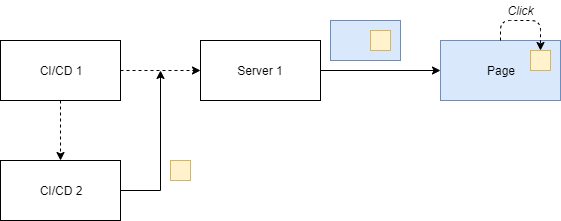The desire to modularize the frontend has steadily increased in the last year. One of the challenges for everyone implementing microfrontends is that there is no single pattern to follow. The available architecture patterns are quite different and come with their advantages and challenges.
Usually, each pattern has a distinct area of use even though hybrids and complex mixtures of the available patterns can be used to blur these boundaries as desired. In this article, I want to go briefly over four of the most common microfrontend patterns to understand their main pros and cons.
Build-Time Integration
The presumably simplest, but most reliable integration is the build-time integration. Reliable in the sense that at build-time we know already how everything works and we can join the different pieces to get a single deliverable.

Example: an architecture for build-time integration
This kind of mechanism is as old as writing software is. In the end, quite often different pieces have been developed independently at different locations, just to arrive at a single point for final assembly. To say the least, automation is key here. The process is best when it just triggers autonomously when any piece changes.
#front-end-development #javascript #software-development #web-development #micro-frontends
